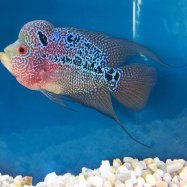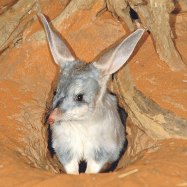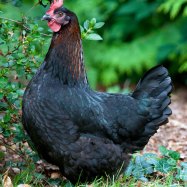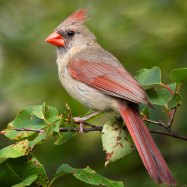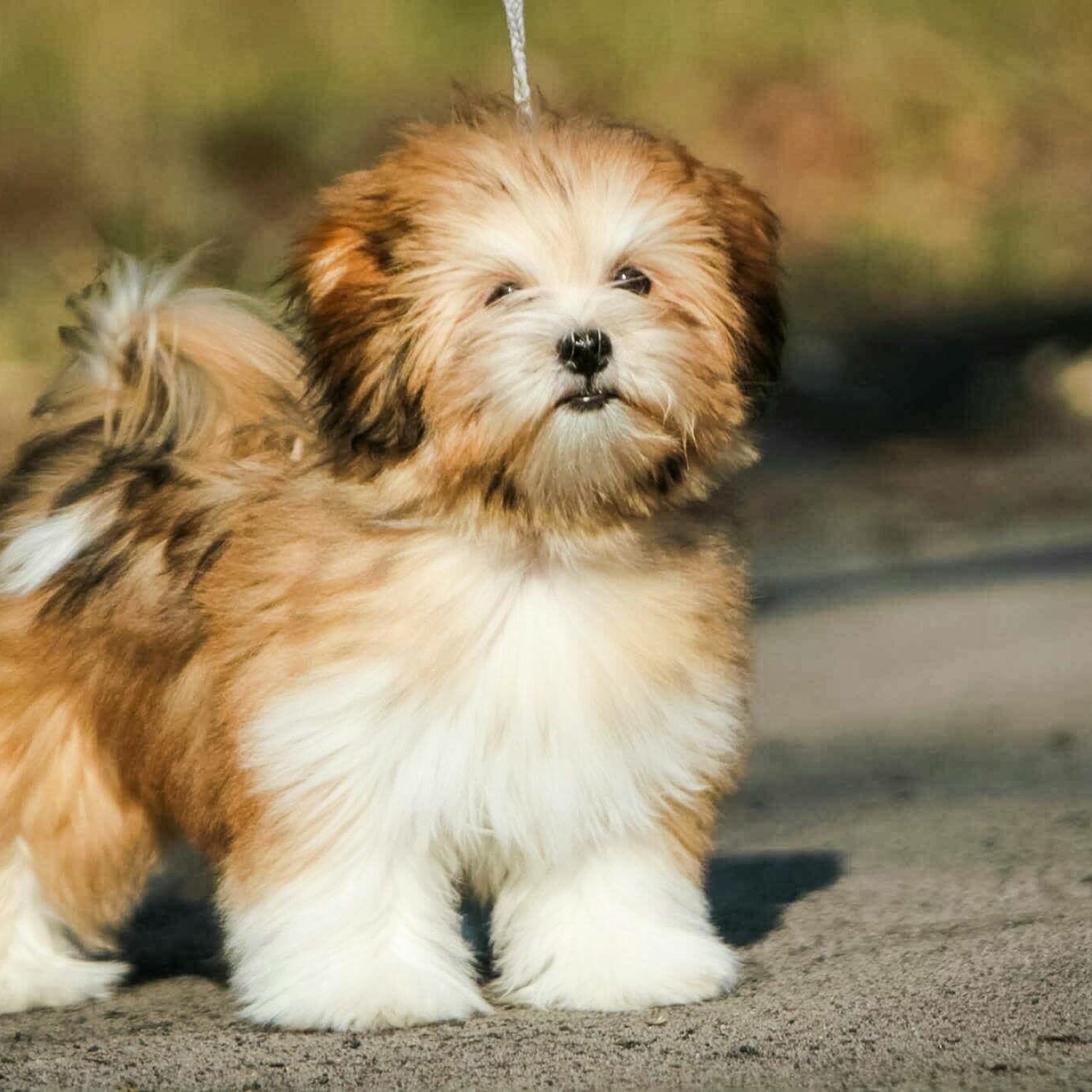
Lhasapoo
12 to 18 inches
Are you looking for an adorable, furry companion to join your family? Consider the Lhasapoo! This lovable dog, from the Canidae family, measures 12-18 inches and is perfect for home living. Its small to medium-sized body makes it easy to snuggle up with, and its playful nature will keep you entertained for hours. So why wait? Bring home a Lhasapoo and add some joy to your life!
Animal Details Summary:
Common Name: Lhasapoo
Kingdom: Animalia
Habitat: Domesticated
The Lhasapoo: A Domesticated Delight
Welcome to the wonderful world of the Lhasapoo, a small to medium-sized dog known for its charming personality and lovable nature. This designer breed has captured the hearts of many with its adorable appearance, but there is more to this fluffy companion than meets the eye. Let's dive deep into the fascinating world of Lhasapoos, from their origins to their characteristics and everything in between.A Brief Background
The Lhasapoo, also known as Lhasapoodle or Lhasa Poo, belongs to the family of Canidae under the scientific name Canis lupus familiaris Lhasapoo. This charming breed is a mix between the Lhasa Apso and Poodle, making it a designer breed that has gained popularity in recent years. While this breed may seem like a recent creation, its origin actually dates back to centuries ago in Tibet, where the Lhasa Apso was originally bred.Habitat and Distribution
As a domesticated breed, Lhasapoos can be found almost anywhere in the world. They thrive in homes, making them excellent companions for families and individuals alike. Their adaptable nature also makes them suitable for apartment living, as long as they get enough exercise and mental stimulation. Originating from Tibet, Lhasapoos have spread throughout the world and can now be found in different countries.Appearance and Characteristics
One look at a Lhasapoo and you'll instantly fall in love with its adorable and fluffy appearance. This designer breed inherits its physical traits from its parent breeds, resulting in a variety of coat colors, ranging from white, cream, black, grey, and even golden. Their fur is usually soft and wavy, making them look like walking teddy bears Lemming.While their size may vary depending on their parents, Lhasapoos are generally small to medium-sized dogs, measuring around 12 to 18 inches in length and weighing between 10 to 20 pounds. Their petite stature makes them a popular choice for those looking for a lap dog. They have a compact body with a well-proportioned head and a medium-sized muzzle. Their eyes are usually round and dark, adding to their cute and innocent appearance.
Temperament and Training
The Lhasapoo is more than just a pretty face; it also has a delightful personality that can win over anyone's heart. These dogs are known for their affectionate and loving nature, making them excellent family pets. They are also great with children, thanks to their patient and gentle disposition. Lhasapoos are also highly sociable and get along well with other pets, making them a great addition to multi-pet households.In terms of training, Lhasapoos are highly intelligent and eager to please, making them easy to train. However, their strong-willed nature inherited from their parent breeds can make them a bit stubborn at times. It is important to establish yourself as the pack leader early on and use positive reinforcement techniques to ensure their obedience and good behavior.
Feeding and Exercise
Being an omnivore, the Lhasapoo can eat a variety of foods, but it is important to provide them with a high-quality diet that meets their nutritional needs. Consult with your veterinarian to determine the best diet for your Lhasapoo, taking into consideration their age, size, and activity level.Like any other dog, Lhasapoos require daily exercise to keep them healthy and happy. They enjoy walks, playing fetch, and other interactive games with their owners. They also have a moderate energy level, making them suitable for both active and laid-back owners.
Health and Grooming
Lhasapoos are generally healthy dogs, but like any other breed, they are prone to certain health issues such as patellar luxation, hip dysplasia, and eye problems. Regular visits to the vet, a healthy diet, and proper exercise can help prevent these issues.In terms of grooming, Lhasapoos require frequent brushing to prevent matting and to keep their coat looking its best. They also need regular dental care and nail clipping. It is recommended to introduce grooming routines to Lhasapoos at a young age to make them comfortable with the process.
Why Choose a Lhasapoo?
There are several reasons why a Lhasapoo would make a great companion. Firstly, their lovable and affectionate nature makes them a perfect family dog. They also have a moderate energy level, making them suitable for all types of owners. Their adaptability to different living spaces and their low-shedding coats are also desirable traits for potential pet owners.Moreover, Lhasapoos are great therapy dogs, due to their calm, patient, and gentle nature. They are also known to have a calming effect on their humans, making them ideal for those with anxiety or stress.
In Conclusion
In summary, the Lhasapoo is a delightful breed that has captured the hearts of many with its charming personality and lovable appearance. This designer breed may be small in size, but it is big in heart and makes a great companion for any type of owner. With proper care, love, and training, a Lhasapoo can bring joy and endless love into your life. Consider adding a Lhasapoo to your family today and experience the wonderful world of this domesticated delight.

Lhasapoo
Animal Details Lhasapoo - Scientific Name: Canis lupus familiaris
- Category: Animals L
- Scientific Name: Canis lupus familiaris
- Common Name: Lhasapoo
- Kingdom: Animalia
- Phylum: Chordata
- Class: Mammalia
- Order: Carnivora
- Family: Canidae
- Habitat: Domesticated
- Feeding Method: Omnivorous
- Geographical Distribution: Worldwide
- Country of Origin: Tibet
- Location: Home
- Animal Coloration: Various
- Body Shape: Small to medium-sized
- Length: 12 to 18 inches

Lhasapoo
- Adult Size: 10 to 20 pounds
- Average Lifespan: 10 to 15 years
- Reproduction: Sexual
- Reproductive Behavior: Mating
- Sound or Call: Barking
- Migration Pattern: Non-migratory
- Social Groups: Family unit
- Behavior: Friendly and affectionate
- Threats: None
- Conservation Status: Not applicable
- Impact on Ecosystem: Not applicable
- Human Use: Companion animal
- Distinctive Features: Long, flowing coat
- Interesting Facts: Lhasapoos are hybrid dogs, resulting from the crossbreeding of Lhasa Apso and Poodle.
- Predator: None

Canis lupus familiaris
The Lovable and Lively Lhasapoo: A Crossbreed of Beauty and Brains
Dogs have been our faithful companions for centuries, providing love, security, and joy to countless homes. With over 300 recognized breeds, it's no surprise that there are endless options for those looking to add a furry friend to their family. One of the newer and more unique breeds on the scene is the Lhasapoo, a cross between a Lhasa Apso and a Poodle. Boasting a beautiful coat, friendly demeanor, and intelligence, the Lhasapoo is gaining popularity as a beloved companion animal PeaceOfAnimals.Com. In this article, we will dive into the fascinating characteristics of this hybrid breed and explore what makes them stand out from the rest.The Basics: Adult Size, Lifespan, and Reproduction
The Lhasapoo typically weighs between 10 to 20 pounds and reaches an adult size of 9 to 13 inches at the shoulder. These compact canines have a life expectancy of 10 to 15 years, making them a long-term commitment for any prospective owner. When it comes to reproduction, Lhasapoos are sexual and follow the traditional mating behavior of most dogs.Social Structure and Behavior
Lhasapoos thrive in a family unit and are known for their friendly and affectionate nature. They make excellent companion animals and are great with children, often becoming loyal playmates and protectors. This breed is highly social and enjoys the company of other dogs, making them a perfect addition to multi-pet households. However, their social nature also means that they do not do well when left alone for long periods. They can suffer from separation anxiety and may resort to destructive behaviors if left unattended for too long Lace Bug.As descendants of the Lhasa Apso, a dog bred to guard Tibetan palaces, Lhasapoos possess a protective instinct and tend to bark at unfamiliar noises or strangers. However, with proper training and socialization, they can learn to differentiate real threats from everyday noises and become more discerning barkers. Overall, Lhasapoos are well-behaved and make excellent family pets due to their friendly and loving nature.
Distinctive Features and Interesting Facts
One of the most distinctive features of the Lhasapoo is its long, flowing coat. Their coat can come in a variety of colors, including white, black, brown, or a mix of these colors. This luxurious coat requires regular grooming to prevent tangles and matting, and brushing at least twice a week is recommended. Their coat also makes them well-suited for colder climates, although they can adapt to warmer temperatures too.Another interesting fact about Lhasapoos is that they are considered a hybrid or designer dog, meaning they are a crossbreed between two purebred dogs. In this case, the Lhasapoo is a mix of a Lhasa Apso and a Poodle. This cross brings together the intelligence and trainability of the Poodle with the playful and loyal nature of the Lhasa Apso. It also gives them their unique appearance and distinctive coat.
No Threats or Impact on the Ecosystem
There are no known natural threats to the Lhasapoo due to their domesticated nature and size. They are not considered a threat to the ecosystem as they are companion animals and do not have a significant impact on their environment. However, as with all dog breeds, it is essential to keep Lhasapoos leashed when going for walks to avoid any potential conflicts with other animals.Human Use and Conservation Status
Lhasapoos are primarily used as companion animals and are not bred for any other specific purpose. They are not currently recognized as a distinct breed by the American Kennel Club (AKC) or other major kennel clubs, but many breeders and enthusiasts are working towards breed recognition.Despite being a crossbreed, Lhasapoos are becoming increasingly popular due to their lovable nature and unique appearance. As a result, there are many responsible breeders dedicated to producing healthy, well-socialized Lhasapoo puppies. If you are thinking of adding a Lhasapoo to your family, be sure to do thorough research and only purchase from reputable breeders.
The Lhasapoo's Contributions to Human Life
Dogs have been a vital part of human life for centuries, providing a range of benefits such as companionship, therapy, and even assistance for those with disabilities. As a companion animal, Lhasapoos offer unconditional love, companionship, and loyalty to their owners, making them highly valued members of the family. They are also intelligent and highly trainable, making them well-suited for therapy or as a service dog for those in need.Additionally, Lhasapoos can also serve as therapy dogs to provide comfort and support to individuals in various settings, such as hospitals, nursing homes, or disaster areas. Their friendly and affectionate nature makes them excellent therapy animals, bringing joy and comfort to those in need.
How to Care for Your Lhasapoo
If you are considering adding a Lhasapoo to your family, it's essential to understand their care requirements. As a hybrid of two smaller breeds, Lhasapoos are generally low maintenance and adaptable to various living situations. However, they still require routine care to ensure their health and happiness.Health:
Lhasapoos are generally healthy dogs, but like all breeds, they may be prone to certain health issues. Some common conditions seen in Lhasapoos include hip dysplasia, eye problems, and allergies. It is crucial to do thorough research and ensure you are purchasing a puppy from a responsible breeder who conducts health checks and provides proper veterinary care for their breeding dogs.Exercise:
Despite their small size, Lhasapoos still require daily exercise to keep them happy and healthy. A 20-minute walk or play session in the yard is usually enough to meet their exercise needs. They also enjoy playing fetch and other interactive games, making them a great choice for active individuals or families.Training and Socialization:
As a mix of two intelligent and trainable breeds, Lhasapoos are relatively easy to train. Positive reinforcement methods work best with this breed, and early socialization is crucial to help them develop into well-mannered and sociable dogs. Enrolling in obedience classes is highly recommended for first-time dog owners to ensure they learn proper training techniques and build a strong bond with their Lhasapoo.Grooming:
As mentioned earlier, Lhasapoos have a long, flowing coat that requires regular grooming to keep it healthy and tangle-free. They should be brushed at least twice a week and taken to a professional groomer every 6-8 weeks for a trim and tidy up. Routine brushing also helps to distribute the natural oils in their coat, keeping it healthy and shiny.Conclusion
Lhasapoos may be a relatively new breed, but their unique characteristics and lovable nature have quickly made them a popular choice for many as a companion animal. They are intelligent, friendly, and loyal, making them an excellent addition to any family. Whether it's providing comfort as a therapy dog, being a faithful companion, or simply bringing joy to their owner's lives, Lhasapoos are sure to continue winning hearts for years to come.

The Lhasapoo: A Domesticated Delight
Disclaimer: The content provided is for informational purposes only. We cannot guarantee the accuracy of the information on this page 100%. All information provided here may change without prior notice.


